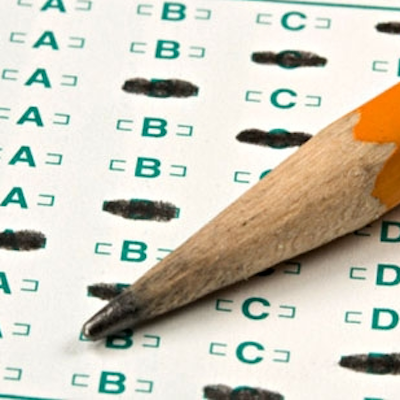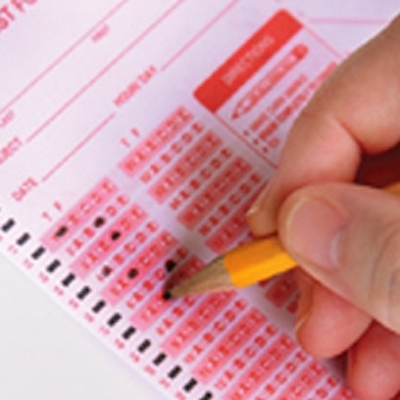Dispute Arises in Providence Schools Over Staffing Report
Sunday, May 17, 2015
A recent consultants' report on the Providence School Department administration has drawn the ire from one section of the employees -- the clerical union.
According to the City of Providence, the report, Providence Public Schools: An Assessment of the Need for District Transformation to Accelerate Student Achievement, paints a "sobering picture of a central office unable to meet the goals of the school district and lacking key capacities in project management, talent management, data analysis and policy analysis."
"They called us paper pushers," said Local 1339 Clerical Union President JoAnne Micheletti, of the coverage of the audit (the report itself refers to some classifications of clerical staff as paper processors). "Just that alone I found highly disrespectful."
GET THE LATEST BREAKING NEWS HERE -- SIGN UP FOR GOLOCAL FREE DAILY EBLAST"We weren't contacted before the audit took place, or while the audit took place. I only found out about it when I saw it reported. There are a lot of inaccuracies about how we were depicted," said Micheletti.
The report, conducted by Mass Insight, is currently being reviewed by Providence Mayor Jorge Elorza's administration and the school board to devise a strategy in the coming months to "better align central administration with the needs of students and families."
“These findings are a call to action,” said Elorza, who called for the audit as one of his first acts in office. “Providence Schools must have a central administration designed to support our schools and engage our community, so we can raise academic achievement across the district. Our children and families deserve a school department that just works, and frankly, our future depends on it.”
Disputing Report, Recommendations
Based on their findings, Mass Insight concluded that Providence Schools "cannot fulfill its obligations to students, families, and citizens without pursuing a transformational approach to its central office."
Micheletti, however, took issue with a number of data points in the report that led to the pronouncement.
"They said the clerk staff ratio is 3 to 1," said Micheletti. "Take payroll. Of course there's going to be 8 clerks, you're running payroll for over 4000 people. Then you have special [education] that might have 10-11 clerks. These are departments that are huge and understaffed."
"The report said there were 230 clerks, there's 192," continued Micheletti. "There were 40 open positions [the city] has refused to hire for, and there are 20 clear vacancies right now. The schools are understaffed."
Micheletti said she is questioning moving clerical staff from central administration to the schools as supported by the report.
"Downtown they are [levels] 4 and 5," said Micheletti, referring to the step classifications of the the unions' employees. "The clerks at the schools are 1 to 3. It's already too lean downtown to begin with, and you're going to take a [clerk] who's a 5 and put them out at a school that's slotted for 1 through 3? That clerk is still going to get their pay at the 5 step even if you slot them for a 3, which doesn't make sense."
The school board is on the record with supporting a de-centralized approach.
“The School Board has been committed to giving decision making to those who work closest with our children," said school board President Keith Oliveria. "To do this successfully, we need a central administration that will help navigate schools with this newfound control and flexibility while maintaining a high level of accountability and transparency."
Micheletti said she was taking up the report -- and its findings -- at the next school board meeting.
"I intend to bring a lot of my clerks with me," said Micheletti.
Related Slideshow: 10 RI State Education Rankings
Related Articles
- It’s All About Education: Is the American Dream a Pipe Dream?
- UPDATED: Raimondo Nominates 5 to Board of Education
- It’s About Education: Funding for Home Visiting Parent Education Programs in Danger
- Final Race to the Top Report Released; Improvement Seen In RI Education
- It’s All About Education: How Vaccination Affects Schools – and Society
- EXCLUSIVE: No Help For Failing Providence Schools This Year
- Education Crisis: Four Providence Schools Still Have No Plans For Next Year
- Grade the Providence Schools -Your Turn
- Providence Schools Violated State Law
- 40 Percent Of Providence Schools Could Be Failing
- Roach: Targeted Providence Schools Should Close
- Education Crisis: 1 in 5 Providence Schools Failing
- Providence Schools Close, Parking Ban to Take Effect
- BREAKING NEWS: Some Providence Schools Will Close Next Year
- EXCLUSIVE: Which Providence Schools Might Close?
- UPDATED: Providence Schools Chief Leaving
- Providence Schools in Crisis: 37% of Students are ‘Chronically Absent’
- Guest MINDSETTER™ Dan Lawlor: Providence Schools are Broken. Literally.
- Update: Raimondo Lifts Travel Ban Starting 8 PM, Providence Schools Closed Tomorrow
- NEW: Providence Schools Closed on Monday, February 9
- Providence Schools Closed Monday, March 2
- NEW: Providence Schools Superintendent Lusi to Resign
- Providence Schools Closed on Thursday, January 8
- Providence Schools 2 Hour Delay
- NEW: Two Providence Schools Recognized for ‘Going Green’
- BREAKING: Lusi to be Named Providence Schools Superintendent
- BREAKING: 24 of 38 Providence Schools Labeled Failing
- NEW: News Conference Set for Providence Schools Labor/Management Pact
- Jencunas: Gist’s Departure Leaves RI Education at Crossroads
- It’s All About Education: Inequities in the College Admissions Process
- It’s All About Education: Social Promotion is Not the Problem
- It’s All About Education: Schools that Harness the Power of Nature
- It’s All About Education: Free College Tuition - Why Just Community College?
- It’s All About Education: A Recipe for Disaster - Common Core Standards for Kindergarten
- It’s All About Education: Changing Lives with School Lunches
- NEW: School Choice Legislation to be Introduced for Education Savings Accounts for RI Families
- It’s All About Education: Making a Commitment to Rhode Island’s Children
- It’s All About Education: School Choice - Vouchers and Tax-Credit Scholarships Don’t Pay
- NEW: Two RI Schools Given Green Ribbon Awards by U.S. Dept. of Education
- It’s All About Education: How Poverty Impacts Brain Development and Learning
- It’s All About Education: Re-Imagining Our Educational System
- It’s All About Education: Failure to Launch - It’s Not Just a Movie
- It’s All About Education: Learning Life Skills at Hope High
- It’s All About Education: How Breakfast Could Help Close the Achievement Gap
- Moses Brown School Hosts Annual Education Summit
- It’s All About Education: Choosing the Right School for Your Child
- It’s All About Education: After School Programs Make a Difference
- It’s All About Education: Can Education Drive Social Change?















